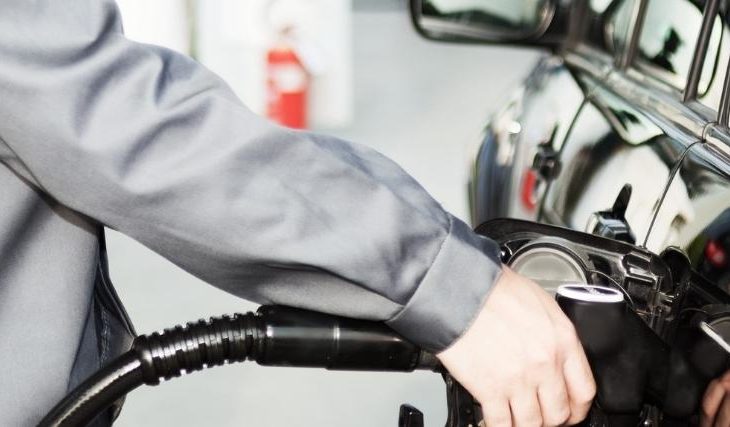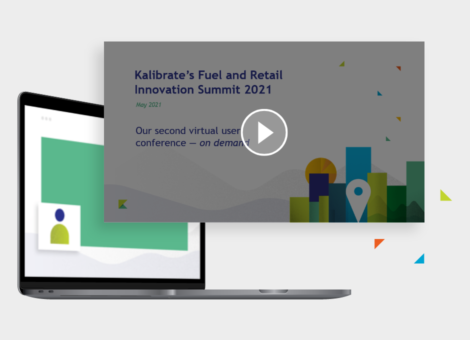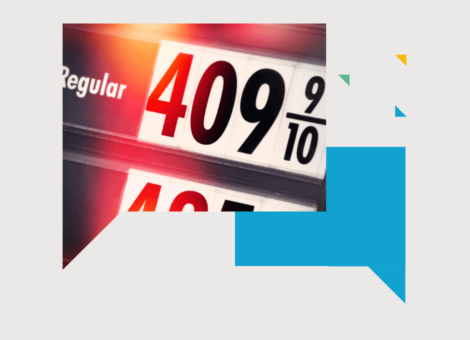The real world: Lessons learned from our fuel retail customers Pt1
Responding to price volatility and changes in consumer demands
Competitor behavior shifts are being felt across the globe. Previously price changes of between 5-10c were expected, but recently, in response to global volatility, historical records are being broken and we are now seeing moves of between 30 – 50c in retail and wholesale prices.
One fuel retailer operating in multiple states in the US told us:
“These changes mean that the spread between competitor pricing can be much wider than normal, causing further volatility in the market. We’ve been able to use Kalibrate Pricing to react quickly and take control over our retail price to contend with chaotic market pricing.”
And these issues aren’t just US specific
“I have slightly different market factors, as we’re based in Europe, but really the challenges are very similar. Over the past few months, the rapid cost price increases have been something we’ve never seen before. What’s really striking is the scale of the price changes that we and our competitors are having to make, which cause us some real challenges. We need to be prepared to act and react quickly.”
The current volatility has been caused by the impact of supply and demand issues as a result of covid – and further impacted by a war on Ukraine. But, one fuel and convenience retailer spoke about the importance of being ready for events like this, as global tensions aren’t the only thing that can cause challenges.
“This is not just a one-time issue that we have to face, issues arise all the time in our industry, with consumer behavior changing and prices becoming volatile. There are always events beyond our control that affect fuel. Climate changes, hurricanes, storms, and pipeline contingencies can always happen, and we need to have plans in place that allow us to react quickly, and don’t disrupt our supplies, otherwise it will seriously impact our company’s profitability.”
Currently fuel retailers are challenged with forecasting accurate outcomes, whether that’s for revenue results affected by fuel price changes, or new locations and improved store performance. Because changes are happening so quickly, and the impact on stores isn’t consistent. One Network Planning Manager for a fuel and convenience store chain told us:
“From a planning standpoint, the biggest challenge for us is just having steady state of information to look at. We continuously look back in time to a pre-covid time to allow us to forecast for our stores.”
The relationship between fuel and stores – and how it may change in the near future
There is a link between fuel and non-fuel performance. Attractive fuel prices can increase your shop footfall and an attractive well stocked shop can increase your forecourt footfall. But with changes in demand and the rise of electric vehicles, is this relationship changing? Kalibrate’s customer panel discussed their own perspectives on this and what they could observe in their own markets.
“We all acknowledge that there is a relationship between fuel and non-fuel business and many of us develop strategies to try to strengthen those relationships. And if we’re envisioning a future where one day fuel will not be required — this could cause us real concern for our entire business model. But I think the data shows that we don’t need to panic. During the recent pandemic, we saw our fuel sales decline by around 40%, but we didn’t see our non-fuel business decline. In fact, we saw a 10% growth in non-fuel sales. And when pipeline closures led to our stores running dry, we didn’t see a material impact on non-fuel sales at all. This leads me to believe that the link is not always as strong as we think. It is changing all the time. We just need to be clever enough to anticipate customer needs and how they are changing so we can continue to offer them what they want.”
Other fuel retailers agreed:
“Each of our stores acts as its own small business. So, as with the rules we use in Kalibrate Pricing, as long as we’ve got the store set up right, we know who our competition is, and we have the right offer inside the store we can satisfy our customer needs. So in a way – we want to weaken that relationship between fuel and store, as we expect fuel to decline, and we’ll make up the difference by nailing the offering inside the store.”
One large, global fuel and convenience had a slightly different perspective that focused on digital innovations that could help to strengthen that link between fuel and store offerings.
“I think in the future you’re going to see more and more retailers getting to the customers at the pumps with merchandise, say, for example, delivering from inside the store to the fuel station where they can order from the app and back and forth. They don’t always come inside the store, they just get their gas and go, but by utilizing technology you can take the store to them. So that relationship between fuel and store will change, but I think the initial change will come from digital interaction at the pumps.”
Find out more about the topics discussed:
- Fuel pricing – managing volatility
- Kalibrate Fuel Pricing – supporting fuel pricing teams to make efficient and robust decisions
- The relationship between fuel and in-store sales – calculating the impact on overall profit
Read more articles about:
Fuel pricingSubscribe and get the latest updates
You may unsubscribe from our mailing list at any time. To understand how and why we process your data, please see our Privacy & Cookies Policy
Fuel price predictions for 2022
With the price of fuel rising across the globe in the past year, many questions are being asked about what the future of fuel pricing could look like and the

Related posts
Fuel pricing
Getting more from Kalibrate Pricing (part one)
Get the most from the latest developments in Kalibrate's fuel pricing platform. Watch on demand now.

Fuel pricing
Getting more from Kalibrate Pricing (part two)
Are you interested to learn how to use Kalibrate Pricing to assess your local market?

